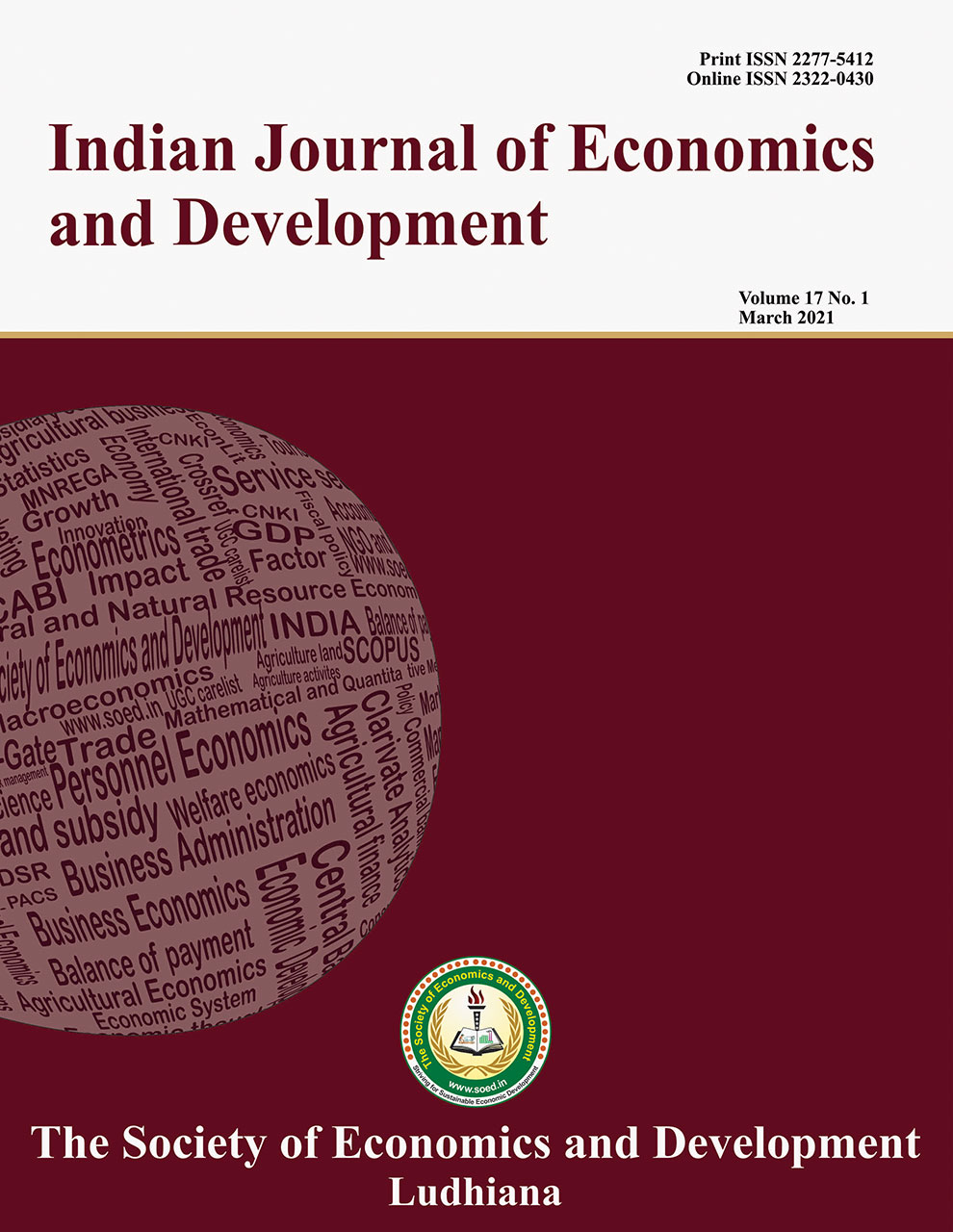Determinants of Demand for Consumer Durables in Bangalore City-An Econometric Analysis

Price: ₹ 1000
Author: N. Raghavendra1 and Siddayya2
Author Address: 1Department of Post-Graduate Studies and Research in Economics, Kuvempu University, Jnana Sahyadri, Shankaraghatta, Shivamogga-577451 (Karnataka), and 2Professor, Department of Agricultural Marketing, Cooperation and Business Management, GKVK, UAS Bengalu
Keywords: Consumer behavior, consumer durables, logistic regression.
JEL Codes: C23, C33, E30, E31, E32, O16.
Abstract
The study was undertaken to understand the status of consumer durables and identify the factors influencing their purchase decisions. The tabular analysis was used for estimating the income of the respondents. Various econometric techniques like cluster analysis, logistic regression, and descriptive statistical techniques were used. To identify the factors influencing their purchase decisions about consumer durables. The summary of logistic regression in the entire selected consumer durables was for refrigerator, education, and durability were the two most important factors that influence the buying of refrigerators with an odds ratio of 1.56 and 2.08, respectively. For televisions, service quality and durability were the two most important factors that influence the buying of television with an odds ratio of 2.56 and 1.59, respectively. With respect to the computer, education and brand technology are the two most important factors which influence the buying of the computer the odds ratio was 1.21 and 1.18, respectively. The education and durability were the most important factors influencing the buying of washing machines and the odds ratio of 1.25 and 1.09 respectively. Lastly, age and education were the two most important factors which influence the buying of mobile with an odds ratio of 1.04 and 1.003, respectively.
Description
Indian Journal of Economics and Development
Volume 16 No. 2, 2020, 264-270
DOI: https://doi.org/10.35716/IJED/19096
Indexed in Clarivate Analytics (ESCI) of WoS
N. Raghavendra1 and Siddayya2
1Department of Post-Graduate Studies and Research in Economics, Kuvempu University, Jnana Sahyadri, Shankaraghatta, Shivamogga-577451 (Karnataka), and 2Professor, Department of Agricultural Marketing, Cooperation and Business Management, GKVK, UAS Bengaluru-560065 (Karnataka)
Corresponding author’s email: ssiddayya@gmail.com



